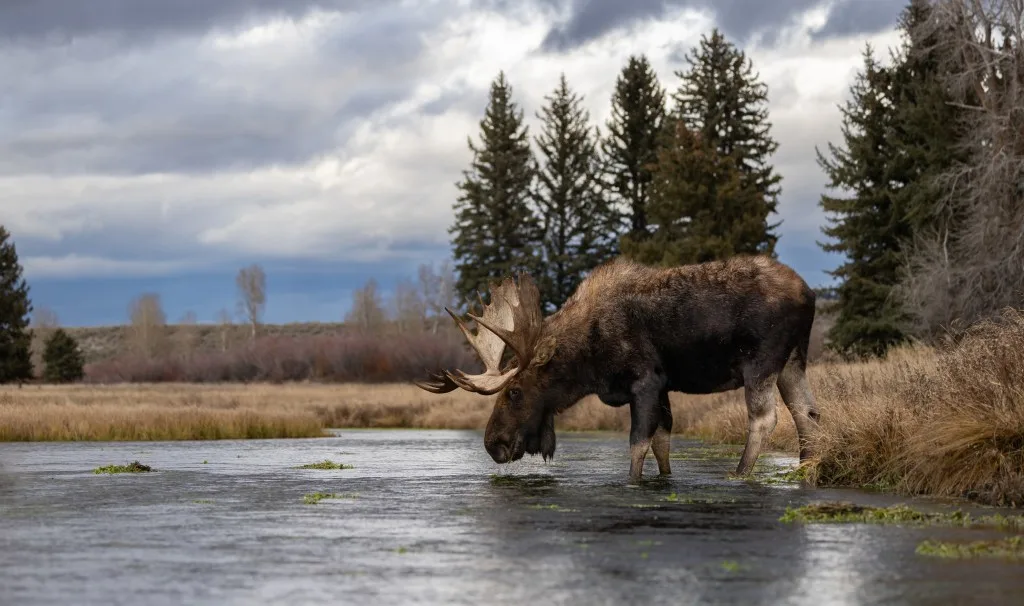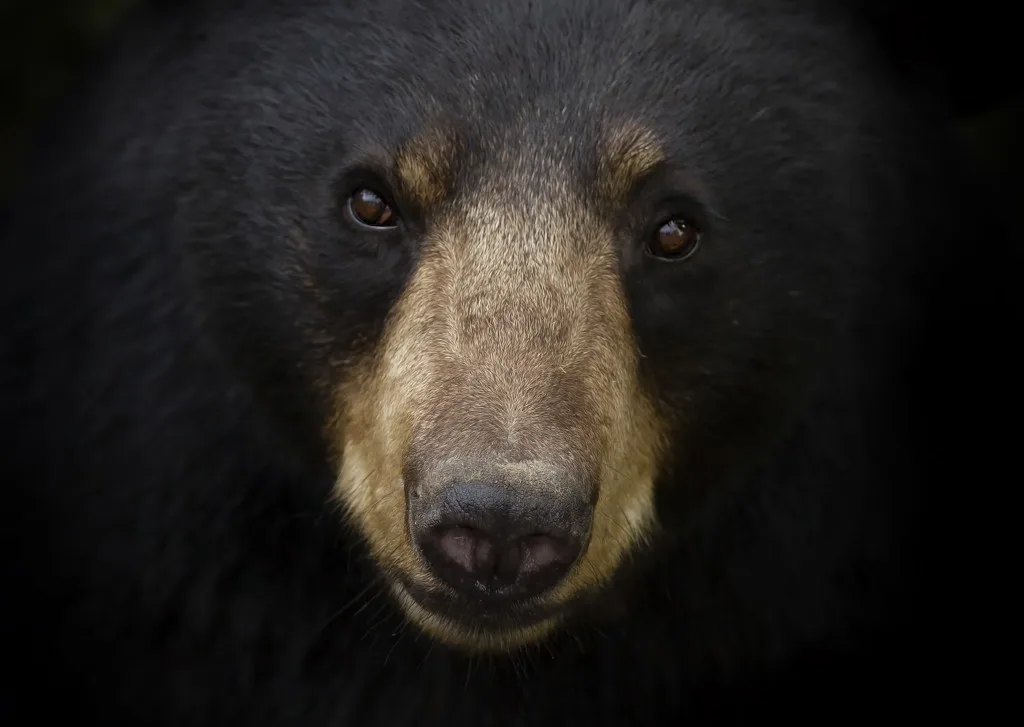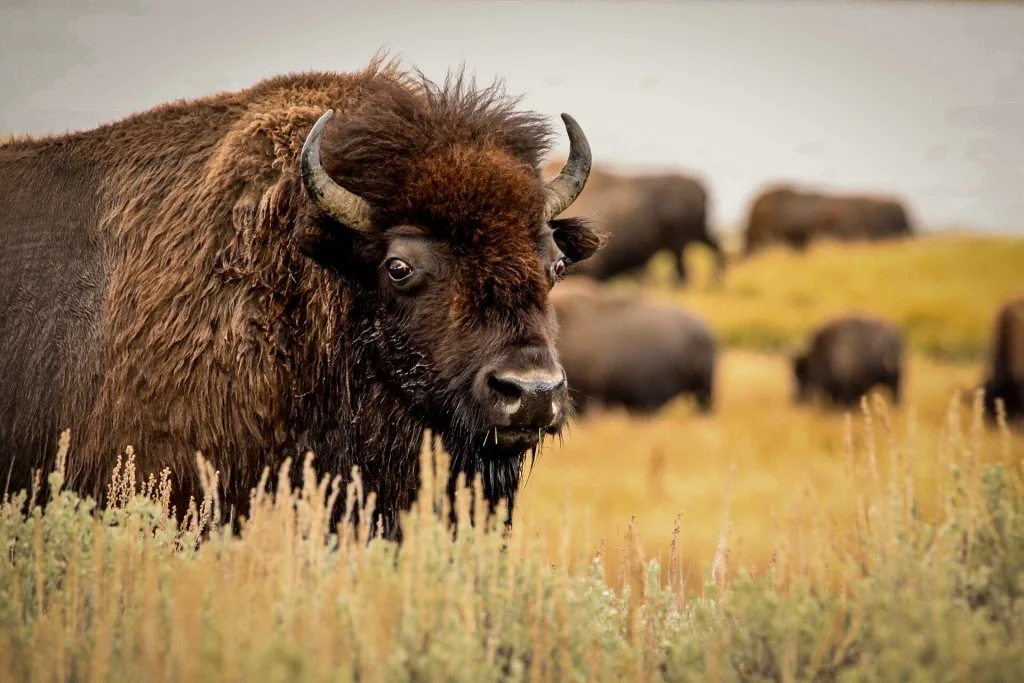Grand Teton National Park is a beautiful place to behold, where wild creatures roam the plains and mountains alike. As protected federal land, it’s one of the few places where human development hasn’t taken over.
But while you can admire the wildlife from afar, some of these animals can be very dangerous. So, what should you look out for, and how can you stay safe in the Tetons?
Today, we’re taking a peek at seven creatures you’ll want to keep a safe distance from on your trip to the Tetons.
Let’s hit the road!
About Grand Teton National Park
The Grand Teton mountain range contrasts dramatically with the grasslands surrounding them. The name comes from the French name, les trois tétons, which translates to the three teats. We’ll let you ponder where they came up with the name on your own.
In 1929, the US government marked the granite peaks and lakes as protected land. They expanded it into the surrounding valleys a few decades later, with some help from conservationist John D. Rockefeller, Jr.
This park is smaller than Yellowstone, but the 454 square miles still have a ton to explore. You’ll find flower-spotted meadows, dense forests, a rushing river, and peaceful lakes. Plus, the space is open to visitors year-round.
You could take it all in across a 42-mile scenic drive or find a better view from above. The peak of Signal Mountain and the nearby Jackson Lake Overlook offer panoramic views that will leave you breathless.
Grand Teton is also home to many wild creatures with free reign over the park. The region initially drew fur trappers who made money in the lucrative beaver pelt trade.
Pro Tip: Planning your itinerary to Grand Teton National Park? Find out Can You Visit Grand Teton and Yellowstone National Parks on the Same Day?

Why Should You Visit the Grand Tetons?
Wyoming is home to not one but two incredible national parks. Most people have heard of Yellowstone, one of the most popular destinations in the National Park Service. That means there’s a good chance you’ll run into crowds.
On the other hand, Grand Teton offers a more peaceful escape. Fewer visitors mean more space to enjoy the natural wonders. But you won’t have rough it. You can choose wild camping or a high-end resort, with plenty of options in between.
Grand Teton is all about activities, whereas Yellowstone is better for people who want to soak in the sights. Active visitors can take hikes through beautiful forests and swim in serene lakes. If you want more than a casual dip, you can try kayaking, windsurfing, or jet skiing.
It’s also a stone’s throw from Jackson Hole, a resort offering many thrilling activities. You can bungee jump, ski, or try zip lining. You can also have a more laid-back ride on the aerial tram, which travels 10,000 feet up to the summit of Mount Rendezvous.
And, if you still want to hit Yellowstone, the south entrance isn’t far from the northern edge of Grand Teton.
When Is the Best Time to Visit Grand Teton National Park?
The vast majority of activities are best from mid-May to late September. This is when the weather makes for great fishing, kayaking, and hiking. However, there are a lot fewer visitors from mid-June through early July.
This time of year also helps you beat the hottest part of the season. You’ll be able to admire the diverse creatures that roam Grand Teton while they’re at their most active. Unfortunately, that also includes mosquitos.
However, in July, the park hits its peak season. This is because it stays warm all day, and there’s a beautiful explosion of wildflowers. However, you can still enjoy peace, especially if you wake up early to take in the sights.
Peak fall foliage happens in mid-September. But once October rolls around, winter hits hard. That’s the best time for cross-country skiing and snowshoeing. And you’ll likely have most of the park to yourself.
How Common Are Bear Attacks in Grand Teton National Park?
These large predators are making a steady comeback in the region. Somewhere between 200 to 600 grizzlies and around 600 black bears reside in the area.
Each year, over two million people visit Grand Teton and encounter all kinds of creatures during their stay. Luckily, there have been only six bear attacks since 1994, and none were fatal.
Still, these animals deserve respect. You don’t want to have a run-in with either species. It’s best to learn safe practices while traveling in bear country. So stay alert, carry bear spray, and never hike alone.
Additionally, it’s essential to bear-proof all food if you plan on spending the night. These clever beasts don’t mind solving puzzles to get a free meal. If you attract their attention, you may encounter the most dangerous creature in Grand Teton.

The Most Dangerous Creatures in Grand Teton National Park
Nearly 500 animal species make their homes in these untamed lands. In fact, wildlife is one of the park’s major draws. And while animal attacks are rare, some of these creatures roaming Grand Teton can pose a severe risk to visitors.
Grizzly Bears
Grizzlies have long been one of the most fearsome animals in North America. They can easily weigh 600 pounds and have superhuman strength. These creatures used to roam throughout the United States, but now they mostly stay north of the Canadian border.
However, they still roam throughout Wyoming and neighboring states. Luckily, these animals rarely mess with humans. You’ll avoid a surprise if you travel in groups and make lots of noise.
Black Bears
While generally smaller and more timid than their cousins, black bears are still dangerous animals. They’re also excellent climbers and won’t hesitate to head for the branches.
In general, they’ll avoid danger and run before attacking. They’re also generally afraid of attacking humans. However, black bears can become very aggressive when it comes to sharing food supplies. They’re more likely to live near settlements and aren’t afraid to dig through the trash, or your campsite, to find a snack.
Moose
Moose are solitary creatures that roam Grand Teton. They’re the largest antlered animals in the world. But it’s not their headgear you have to worry about. They have sharp hooves and aren’t afraid to use them when startled or threatened.
Park rangers are no strangers to this danger. In their training, they learn moose are often more dangerous than grizzlies. Female moose usually only act to protect their babies. But the bull moose get highly aggressive in the fall during mating season.
If a moose walks towards you, slowly back away with your palms facing out. Try to get behind a tree or rock if it begins to charge. In most cases, they’re only bluffing and will back off once you take cover.
Bison
Bison are very different from cows. Believe it or not, these peaceful-looking creatures are responsible for most animal attacks. The mothers with young calves are very protective. Even worse, they can run 35 mph and leap a six-foot fence. That means there’s little chance of escaping once you piss them off.
So enjoy these animals from a safe distance. They’re more plentiful than bears, so your odds of an encounter are much higher.

Deer
These quiet, careful creatures are a wonder to watch in Grand Teton. You can see them listen to their surroundings while their ears dart back and forth.
While deer aren’t generally dangerous to hikers, they can be a problem for people driving. Animal collisions are one of the most common problems in the park. Slow down and stay alert if you see a sign warning of animal crossing. This protects local wildlife and may save your life.
Elk
Grand Teton National Park features the National Elk Refuge, where as many as 15,000 of these creatures stay over winter. While they may not be as big as moose, elk are among the largest land animals in the world.
While elk pose a similar threat to drivers as deer, they aren’t nearly as peaceful. If you approach them, they may think you’re attacking and charge. One man learned this the hard way in the summer of 2022 when an elk came right for him. Luckily, he dodged through trees to avoid an attack.
Wolves
Wolves may look like your best friend, but they’re wild animals. Unlike bears, these canines are very territorial. They’re an incredible sight to see but always admire them from afar. The NPS recommends at least 100 yards for safety.
Conservationists reintroduced the animals back into the area in the ’90s. Since then, they’ve helped bring balance back to the ecosystem. There are about eight packs in the Jackson Hole area, and they’re active at night.
Pro Tip: Keep an eye out for wildlife while hiking The Teton Crest Trail.
Is Grand Teton National Park Worth Visiting?
Don’t let the dangerous creatures scare you away from Grand Teton National Park. Sure, there’s lots of wildlife in the park, but it’s rare for encounters to turn ugly.
This place offers a peaceful respite where you can enjoy the great outdoors. The exercise and tranquil scenery are perfect stress-busters when you need a true escape from day-to-day life.
Plus, a trip to Grand Teton can fit just about any experience you’re looking for. Whether you want to go primitive style, hop in the RV, or book a luxurious cabin, this park has it. And odds are you won’t have to fight through crowds to appreciate it.
We’ll Help You Find the Best Free Camping in the USA
You should give it a try!
As a matter of fact, these free campsites are yours to enjoy. Every time you pay federal taxes, you’re contributing to these lands.
Become a FREE CAMPING INSIDER and join the 100,000 campers who love to score the best site!
We’ll send you the 50 Best Free Campsites in the USA (one per state). Access the list by submitting your email below: